What's the best surfboard for every type of surfer? It's a perennial question pondered by surfers of all levels. The answer: It's all about balancing your current skill level, your expected wave conditions, and your future aspirations. Whether you're a beginner catching your first waves or an expert shredding the gnarliest barrels, the best surfboards can make all the difference in your experience.
To help familiarize you with some of the most popular technologies in play, and take some guesswork out of seemingly infinite choices, we did the research and narrowed in on some of the best surfboards for every style and level of surfer.
Surfboard tech has come a long way in recent years. Where once boards were standardized as polyurethane and resin molded into a handful of general designs, the best surfboards of 2023 are modernizing the landscape of board design with new technologies and techniques that make the options seem almost endless.
Whether you're a seasoned pro or just starting out, there are a few key things to keep in mind when looking for the perfect board to catch and ride tasty waves.
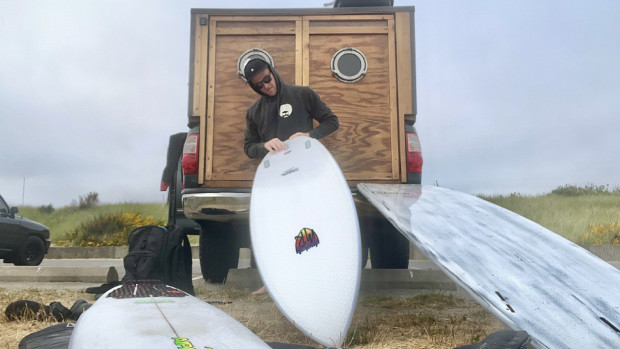
Michael Misselwitz
Our Testing Process
Testing was performed over the course of four months in California, Oregon, and Washington, with the bulk of testing taking place during late winter on Washington’s Olympic Coast.
Men’s Journal aims to feature only the best products and services. We update when possible, but deals expire and prices can change. If you buy something via one of our links, we may earn a commission.
The Best Surfboards of 2023
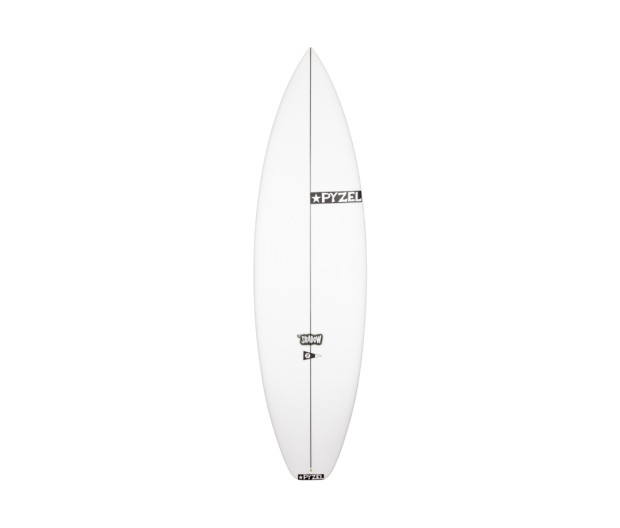
Courtesy Image
Shadow is among the newest creations from Jon Pyzel, a Hawaiian shaper who carved his niche building boards that excel in waves of consequence. Designed with input from two-time world champ John John Florence, Shadow is not a beginner board, but its progressive shape does make performance surfing easier for more modest skill levels.
To create Shadow, JJF modified another winning Pyzel model, Phantom, with a wider forward outline and a bit of extra foam in the chest, adding paddle power to its sleek, high-performance package. Extra rocker in the nose helps it stay loose in critical turns, while a gentle hip and a pulled-in squash tail tighten its turning radius. Originally made to accommodate hollower, more powerful waves, Shadow has developed a following for high performance in all types of surf.
First Impression: I’m not a progressive shortboarder (more of a “surf everything” kind of guy), but Shadow made critical shortboarding feel more approachable than other boards I tested. It comes available as either a polyurethane (PU) or epoxy. The PU I tested featured a well-balanced profile that felt lively underfoot.
Shadow seems to have foam in all the right places for easy paddling, but aggressive surfing. Where backside surfing is usually my weakest link, Shadow made surfing off my heels feel less glitchy. Bottom turns sprung the board forward off the rail, which set me up well for vertical snaps. Off the lip, the redesigned tail swiveled tightly without losing control. Shadow went well in smaller, punchier beachbreak, but it especially shined when the swell filled in to overhead.
-
Skill Level: Intermediate to advanced
-
Style: High-performance shortboard
-
Wave-Size: Waist-high to overhead
| Pros | Cons |
|---|---|
|
👍 Foam in chest makes for easier paddling |
👎 Less approachable for beginners |
|
👍 Swivels off the lip |
👎 Takes some adjustment when switching from other boards |
|
👍 Stable at high speed in bigger waves |
👎 Not suited for small waves |
[$855; jackssurfboards.com]
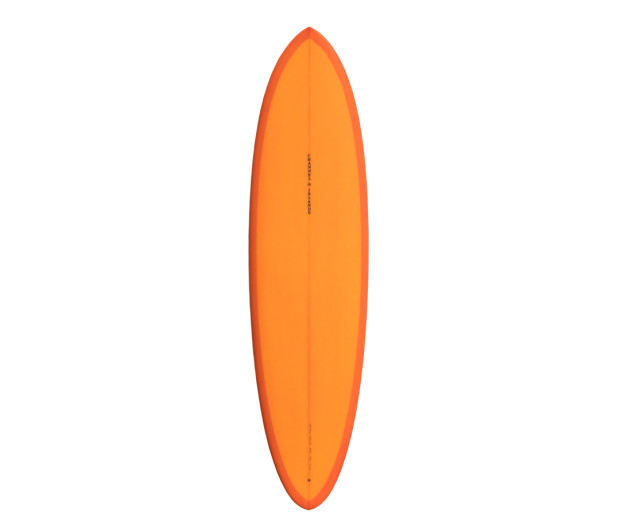
Courtesy Image
Devon Howard is a renowned Southern California surfer who spent the past two decades riding and refining egg and longboard designs into a category of boards known as midlengths. For CI Mid, he teamed up with one of surfing’s most iconic brands, Channel Islands, to create a more high-performance rig inspired by traditional shapes.
Not quite a funboard but far from a shortboard, CI Mid comes stock in sizes ranging from 6'3" to 7'9" and carries a low entry rocker that allows for easy paddling and effortless trim speeds. Contemporary bottom contours like double-barrel concave; gradually accelerated rocker; and hard, slightly tucked rails through the tail allow for precise turning. Available in both 2+1 or twin fin configurations, CI Mid pairs with a custom set of fins designed specifically to enhance its performance and accommodate a wide range of conditions.
First Impression: I wasn’t lucky enough to test this board myself, but after taking notes from the pros and asking around trusted sources in the industry, I’m confident there’s no better mid-length on the market. Devon Howard is renowned for his contributions to the “mid-length” category, and in collaboration with one of surfing’s most respected brands, CI Mid was destined for greatness. Low and behold, it quickly became one of the most popular boards of the year, converting even some of the most staunch shortboarders into fans of its longer makeup.
Here’s what professional shortboarder Alex Gray had to say about it: “I brought the CI Mid with me to Punta Conejo Resort and rode it the majority of the time. I loved how much ground I could cover on such a long point. Every session was more and more fun leaning into new lines and sensations.”
- Skill Level: Intermediate to advanced
- Style: Midlength
- Wave-size: Waist-high to overhead
| Pros | Cons |
|---|---|
|
👍 Great size for transitioning from longboard down |
👎 Limited maneuverability compared to shortboards |
|
👍 Well-suited to a wide range of waves |
👎 Not ideal for the smallest days |
|
👍 Easier to paddle than smaller boards, easier to manage in big surf than longboards |
👎 Not staff tested |
[From $1,095; cisurfboards.com]
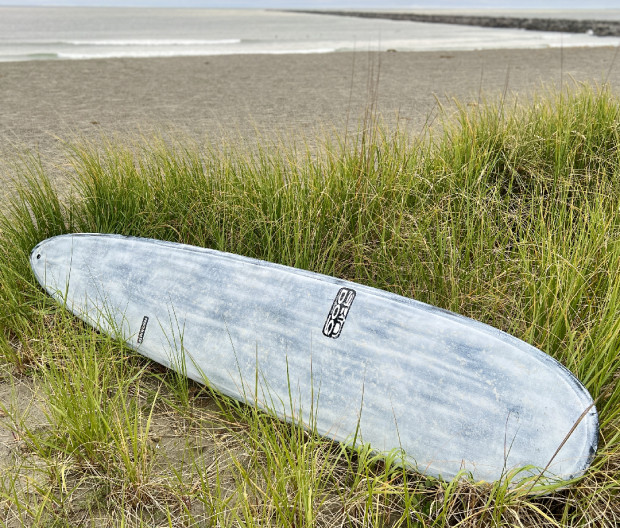
Michael Misselwitz
The high-performance feel of Firewire’s Peacemaker stems from an amalgam of thoughtful design, futuristic materials, and an aggressive, albeit approachable rail system. Its shaper, Ben Skinner, designed Peacemaker to achieve ubiquitous flow between noseriding and tail surfing without breaking the line of trim, and in knee to chest-high summertime surf, we found it achieves that almost supernaturally.
Peacemaker’s 9’1” shape is thinner and more agile than a traditional single fin, with harder rails that allow for steep turns, but enough foam to glide into the smallest waves. It incorporates Thunderbolt Black technology, an ultramodern, Japanese composition comprising an EPS core inlaid with straps of carbon fiber and wrapped in fiberglass and more carbon. The material’s ability to spring out of turns and harvest energy from the board's natural flex separated it from other contestants for this category, placing the Peacemaker at the bleeding edge of both progressive shaping and surfing.
First Impression: From the first turn I made on Peacemaker, the Thunderbolt Black technology was instantly noticeable. It sprung out of bottom turns with added speed that carried down the line, and maintained its energetic feel as I cross-stepped toward the nose. In any given turn, I could feel the board harness the motion’s kinetic energy to propel me into my next move. Maintaining flow while moving around the board felt seamless, and once I arrived at the nose, the board felt locked in the curl.
While the Peacemaker is quite buoyant, it’s not especially thick and won’t pull you into waves like bulkier boards might. If you’re a beginner, or your mission is solely to noseride, I’d look for something different (like the Catch Surf Log or Bing Beacon). But for those looking to progress their longboarding to a performance realm that other longboards can’t achieve, Peacemaker would be my weapon of choice.
- Skill Level: Beginner to advanced
- Style: Longboard
- Wave-size: Waist-high to overhead
| Pros | Cons |
|---|---|
|
👍 Incredibly responsive and intuitive turning |
👎 Less buoyant than traditional longboards |
|
👍 Maintains speed when transitioning from tail to nose |
👎 Less suited for entry-level longboarders |
|
👍 More ding-resistant than PU boards |
👎 Tricky to manage in big surf |
[$1,475; firewiresurfboards.com]
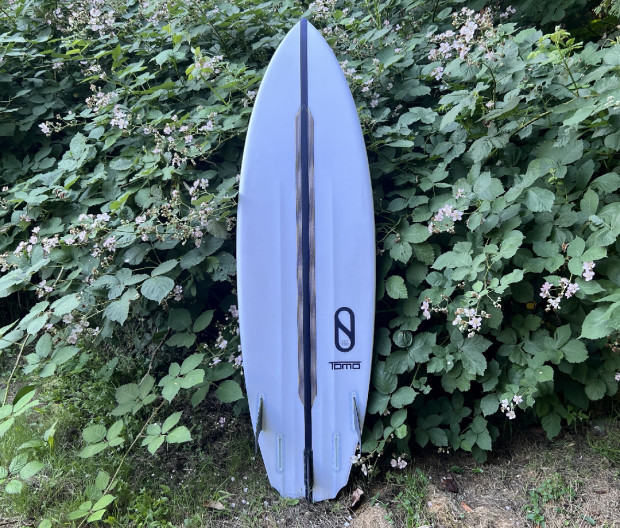
Michael Misselwitz
Sci-Fi 2.0 by Slater Designs is the second iteration of a hybrid shortboard originally made by trend-setting shaper Daniel “Tomo” Thompson with input from 11-time world champ Kelly Slater. An epoxy crossbreed landing between a shortboard and a fish, Sci-Fi 2.0 carries futuristic design elements such as a carbon-fiber stringer, a double bat tail, and a quad concave between the fins.
Where the concave and bat tail are engineered creates grip and maneuverability akin to a shortboard in turns. Sci-Fi 2.0’s centered wide point and parallel straight rails are designed to catch waves more like a fish. With that, it offers an approachable entry-point to shortboarding for intermediate surfers, and a dynamic, high-performance setup for advanced surfers in need of a one-board quiver.
First Impression: This board is designed to be ridden two to four inches shorter than a typical shortboard. With the wide tail, pulled in nose, and centered wide point, it paddles surprisingly well at that length. I surfed it in Washington during the tail end of winter and encountered the full gamut of conditions. For me, it performed best in steeper, chest- to head-high beach break, where it clawed through bottom turns and whipped off the lip with intensity.
The quad channels in the tail generate lift that makes it speed down the line, and though the wide rear end did well to catch most waves, the double bat tail paired with a thruster setup pivoted better than my usual fish. After two months of surfing Sci-Fi 2.0, I felt like I was just scratching the surface of its capabilities. This is a board with endless potential.
- Skill Level: Intermediate to advanced
- Style: Hybrid shortboard
- Wave-size: Waist- to head-high
| Pros | Cons |
|---|---|
|
👍 Extremely lively and responsive |
👎 Dings surprisingly easily (not a great travel board) |
|
👍 Swivels on a dime |
👎 Takes a lot of experimenting to get used to |
|
👍 Wants to go fast |
👎 More chattery on surface than PU boards |
[$599; jackssurfboards.com]
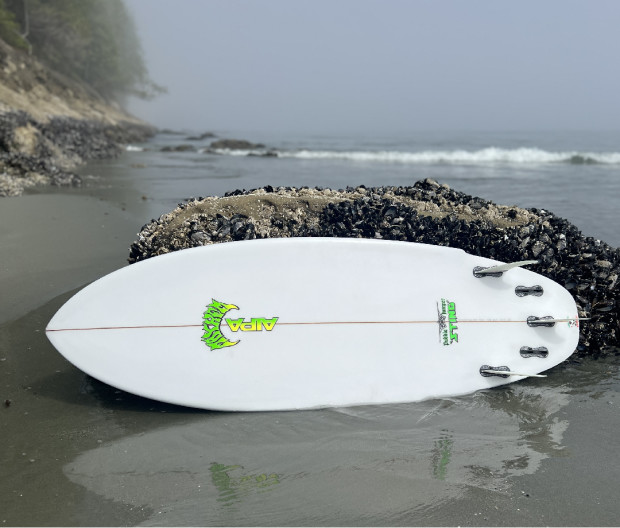
Michael Misselwitz
Lost Puddle Jumper is a time-tested small-wave favorite with wide, thick polyurethane foam under the chest that makes gutless summertime waves easier to catch and ride. It’s universally recognized as one of the best boards for its intended use—groveling—but limited maneuverability is one setback of its previously husky squash tail.
Biolos changed that by teaming up with AIPA Surfboards, whose founder, Ben Aipa, invented the “Sting,” a wingtail design that’s been a mainstay in surfing since the ‘70s. Paired with Puddle Jumper, the Sting’s ability to pivot tighter and whip through turns faster makes an already iconic board even better.
First Impression: Put simply, Puddle Jumper Sting makes small waves more fun than any other board I’ve surfed. Thick foam under the chest makes paddling feel powerful, and its ability to slink into pint-sized waves where other boards bog is uncanny. Even with the original tail, I loved how the Puddle Jumper turned—its concave bottom and exaggerated rail curve make it far more nimble than the girthy outline lets on.
That said, AIPA’s Sting tail takes turning Puddle Jumper to a whole new level—noticeably whippier but not at the sacrifice of stability. I played around with different configurations among the five FCS II fin boxes, but like it best as a thruster with Medium ROAM Performance fins.
- Skill Level: Intermediate to advanced
- Style: Small-wave groveler
- Wave-size: Knee- to shoulder-high
| Pros | Cons |
|---|---|
|
👍 Makes catching and riding small waves fun |
👎 Huskier than traditional shortboards |
|
👍 Uncanny paddle power |
👎 Not suited to overhead waves |
|
👍 Sting tail drastically enhances maneuverability |
[From $765; catalystshop.com]
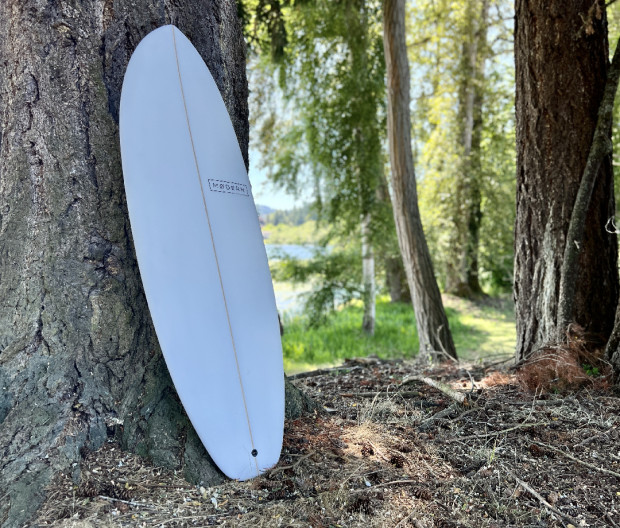
Michael Misselwitz
Global Surf Industries (GSI), the manufacturer behind Modern’s Highline series, is a brand wholly focused on easing the learning curve of surfing. “Our goal is to give people the confidence they need to not just start surfing, but keep surfing for the rest of their lives,” says Mark Kelly, GSI's founder.
To that point, Highline was designed as a stepping stone for beginner surfers shifting from longer foam boards to higher performance hard boards. It’s available as an epoxy soft top or a polyurethane (PU) hard board, and comes in sizes ranging from 5'8" to 6'8". It mimicks the length of performance shortboards but with the rocker of a fish and volume on par with a much more user-friendly rig. At the modest price point of $495, the price tag is as approachable as the step down in size.
First Impression: High Line’s added volume lends paddle power and stability that makes riding a shorter board far more stable than typical shortboards. It’s a wave-catching machine that noses its way into less powerful surf with ease. While the softer, chubbier rails aren’t the most conducive to pinpointing turns, they do achieve their intended purpose of stability.
The 5'8" PU High Line I tested measures in with a whopping 35 liters in volume, enough to float my 5’8”, 165-pound build and then some. (For comparison, I usually ride a 28L shortboard). While the board lacked aggressiveness in steeper, more critical waves for me, it makes a great backup groveler and a perfect rig for my novice little sister, who used it to downsize from her usual soft top. She’s never had more fun surfing.
- Skill Level: Beginner to intermediate
- Style: A board for learning
- Wave-size: Knee- to shoulder-high
| Pros | Cons |
|---|---|
|
👍 Tons of volume for beginners |
👎 Less maneuverable than other boards that length |
|
👍 Great transition board from longboard to shortboard |
👎 Not suited to advanced surfers |
|
👍 Easy to catch and ride small waves |
👎 You’ll out-surf it eventually |
[From $510; us.surfindustries.com]
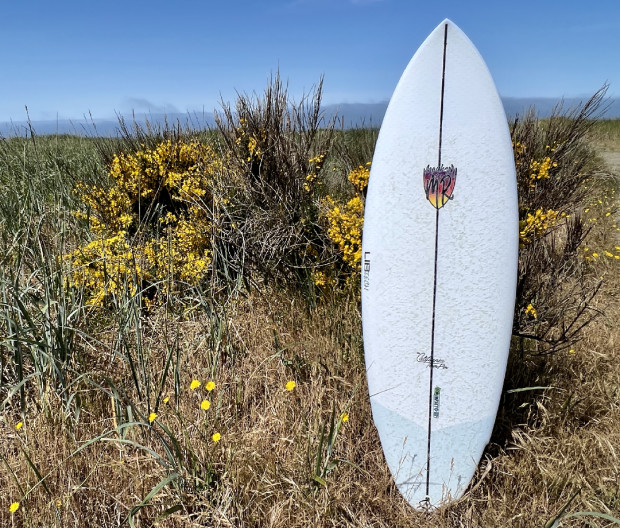
Michael Misselwitz
Lib Tech’s eco-conscious tech aside, California Twin Pin is a standout, thanks to its classic rounded pintail, which stems from another Matt Biolos collaboration—this time with four-time world champion, Mark Richards. The Twin Pin is the next evolution of the California Twin, a swallow-tail small-wave slayer that Biolos and MR redesigned with a rounded pintail to work better in bigger conditions. They also pulled in the nose and added foam and rocker under the chest, making it extremely floaty and easy to paddle.
As with all Lib Tech boards, Twin Pin is made with a plant-based resin and a core comprising up to 40 percent upcycled materials, which drastically reduces the board’s carbon footprint. Where PU and EPS boards are relatively easy to break, Lib Tech’s magnesium fiber wrap makes the Twin Pin nearly impossible to ding.
First Impression: While the magnesium-fiber finish and carbon stringer rode stiffer than traditional PU surfboards, the board still felt surprisingly responsive and playful. Underfoot, its texture is more akin to epoxy than poly, but it didn’t feel chattery on the water’s surface—a benefit of the honeycomb panels Lib Tech embeds in the surface to absorb vibration.
At 32 liters of volume, the 5'9" board I sampled was far more floaty than comparable PU models, but at the same time it wasn’t “boxy,” with pulled-in rails that set well despite the high volume. It’s a great option for intermediate surfers, or those looking to downsize from funboards to a more versatile high-performance rig. Moreover, Twin Pin has become my main travel board, since I don’t have to worry about it getting dinged by baggage handlers. I’m confident this puppy will outlast every other board on my rack.
- Skill Level: Beginner to advanced
- Style: Pintail shortboard
- Wave-size: Waist-high to overhead
| Pros | Cons |
|---|---|
|
👍 Difficult to ding (great travel board) |
👎 Material is a bit stiff |
|
👍 Fast and responsive |
👎 Floaty and trickier to duck dive |
|
👍 Pintail holds well in large waves |
👎 You’ll get funny looks from PU surfers |
[$880; lib-tech.com]
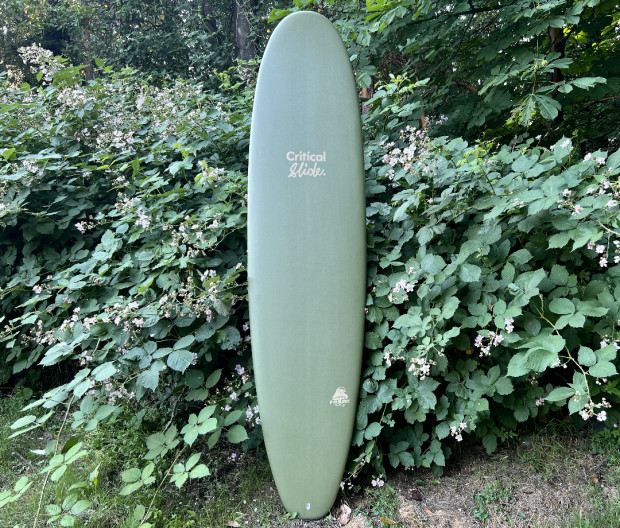
Michael Misselwitz
As the name suggests, Critical Slide’s Fun Guy is a fun-shaped surfboard with a foam deck and more technical nuances than comparable soft-top surfboards. At its core is a lightweight EPS blank with parallel wooden stringers that underly its polyethylene (PE) softshell topper. On the bottom, a high-density, slick PE skin creates a smoother, more rigid surface, with a single to double concave embedded from the center through the tail.
The Fun Guy’s softshell epoxy construction pairs with its funboard shape for a board that flexes like an EPS hardboard, but is playful and forgiving enough to make the most novice surfer feel comfortable. It’s available in sizes ranging from 7' to 9'1", and serves well as an everyday beater for less critical days—or a one-board quiver for entry-level surfers.
First Impression: I always like to have a soft-top in tow, but not all soft-tops are created the same. Fun Guy is the first I’ve found that rides less like a plank and more like an actual surfboard. Its wave-catching prowess is on par with other foam boards. It can paddle into just about anything—but it sets itself apart once I’m up and riding by being less flimsy feeling under my feet.
I ride the 7'6" in knee to shoulder-high surf and find it works well across the board. It’s also my go-to loaner board for beginner friends, and serves me well when I want to surf a cobblestone point at low tide without worrying about dings.
- Skill Level: Beginner to intermediate
- Style: Foam-top funboard
- Wave-size: Knee- to chest-high
| Pros | Cons |
|---|---|
|
👍 Soft and friendly for beginners |
👎 Foam boards are not as responsive as hard boards |
|
👍 Does not ding |
👎 Not suited for technical performance surfing |
|
👍 Exceptional beater board |
👎 Could delaminate over time |
[From $348; amazon.com]
Things to Consider When Buying a Surfboard
Here are the top things to consider before shelling out for a new stick or adding to your current quiver.
1. Skill Level
The most important rule in picking out a surfboard is this: A board is only as good as its surfer. Even the best, most expensive boards won’t change that, and you can’t blame the board for operator error. Any board’s performance will be a direct reflection of the amount of water time you’ve put in, but with that, some boards cater more to beginners. Most importantly, choose a board that’s well suited to your ability, and if you’re unsure, err on the modest side.
2. Style
Surfing is like painting—different strokes for different folks. The act takes many forms—longboarding, shortboarding, big-wave surfing, aerial, groveling, etc.—and each style comes with a range of designs that are suited to it. Style is a reflection of your goals with surfing. While high-performance shortboarding might be your end game, getting there takes experience, and longboarding is generally the place to begin. Find a board that serves your style and skill level, and ideally, one that leaves a bit of room for growth.
3. Wave Size
Not every surfboard is designed to surf 60-foot Nazaré, just as not all are made for small waves. When considering a new board, the rule of thumb for beginners is that foam is your friend, and more volume is conducive to catching smaller waves. For example, longboards and mid-lengths usually run above 35 liters and work great when the waves are waist-high or less. Across the spectrum, performance shortboards are typically in the 23- to 30-liter range, and pair better with punchier, chest-or-higher waves. Along with a surfer’s weight, skill level is an important factor in choosing volume to match the wave sizes you intend to ride. If you’re unsure, go with a bigger volume and smaller waves.
4. Materials
Surfboards are typically made of foam or fiberglass. Foam or "soft-top" boards are ideal for beginners as they provide stability, safety, and durability but have limited performance. Fiberglass boards are preferred by intermediates and experts as they offer better performance and responsiveness.
5. Fin Setup
The fin setup influences how the board handles. Beginners may find a thruster (three-fin) setup easier to control, while experts often prefer quad style (four fins). Single-fin setups are common on longboards and provide a good balance of stability and maneuverability, especially when riding on the open face of a wave.
6. Try Before You Buy
Whenever possible, test out a few boards before making a purchase. Demo days or renting boards can help you get a feel for different options.
7. Budget
Surfboards can range in price, so set a budget and stick to it. You don't need the fanciest board to catch great waves and have fun.
from Men's Journal https://ift.tt/SxewztG
No comments:
Post a Comment